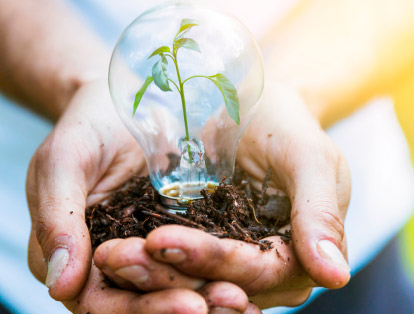BIOELECTRICITY
Using only 14% of their potential, Brazilian sugarcane mills are the third most important electricity suppliers in Brazil’s electricity mix. Experts estimate that with full use of sugarcane residues, bioelectricity could reach 153,000 GWh to the grid. That would be enough energy to power a country the size of Argentina or Norway.
As it grows, the sugarcane plant converts sunlight into stored chemical energy. Every part of the plant can be used in different processes, but there are three main components that contain this stored energy:
Juice | The sweet liquid inside the sugarcane stalk contains sucrose, which is used to produce sugar and ethanol.
Bagasse | The dry, fibrous residue left after sugarcane is crushed. One ton of cane produces about 250 kilos of bagasse (50% moisture)*. Source: CTC (2015).
Straw | The tops and leaves of sugarcane stalks.
Brazilian sugarcane mills learned to harness the energy stored in biomass by burning it in high-efficiency boilers to produce bioelectricity. As a result, these mills are energy self-sufficient, producing more than enough electricity to cover their own needs. A growing number of mills also generate surplus energy, which is supplied into Brazil’s National Interconnected System and helps to light numerous cities throughout Brazil. Thanks to sugarcane bioelectricity, in 2023, sugarcane mills supplied more than 20,973 GWh to the grid, or 4% of Brazil’s electricity requirements.
GREEN ENERGY SEAL
The Bioelectricity Certification Program is the first Brazilian initiative focused on sugarcane-based electricity. It aims to promote and amplify bioelectricity participation in Brazil’s matrix.
Created in 2015, the program was supported by the Brazilian Sugarcane Industry Association (UNICA) in partnership with Electric Energy Trading Chamber and is endorsed by the Brazilian Energy Traders Association.
The program provides a Green Energy Seal to electric energy sales agents who acquire renewable energy from certified mills.


BIOELECTRICITY
BENEFITS
- Low environmental impact
- Reduces GHG emissions
- Producers can obtain carbon credits
- Highly complementary to hydroelectricity
- Reduces energy transmission loss
- Generated closer to consumers, avoiding the need of investment in transmission centers
Let’s Make Decarbonisation a Difficult Task
Decarbonization in the European Union may be hindered by sidelining crop-based ethanol — a scalable, science-backed solution.
News

COP30 First Week Fueled by Biofuels Panels Discussions
Throughout the first week of COP30, alongside the official negotiations, several important forums and debates on energy transition took place, with Brazil’s bioenergy sector participating actively.

Brazilian Bioenergy Sector Launches a Declaration on Belém Accord at COP30
At COP30 Brazil’s biofuels sector took a landmark step in reinforcing the global role of sustainable fuels in meeting climate commitments.
